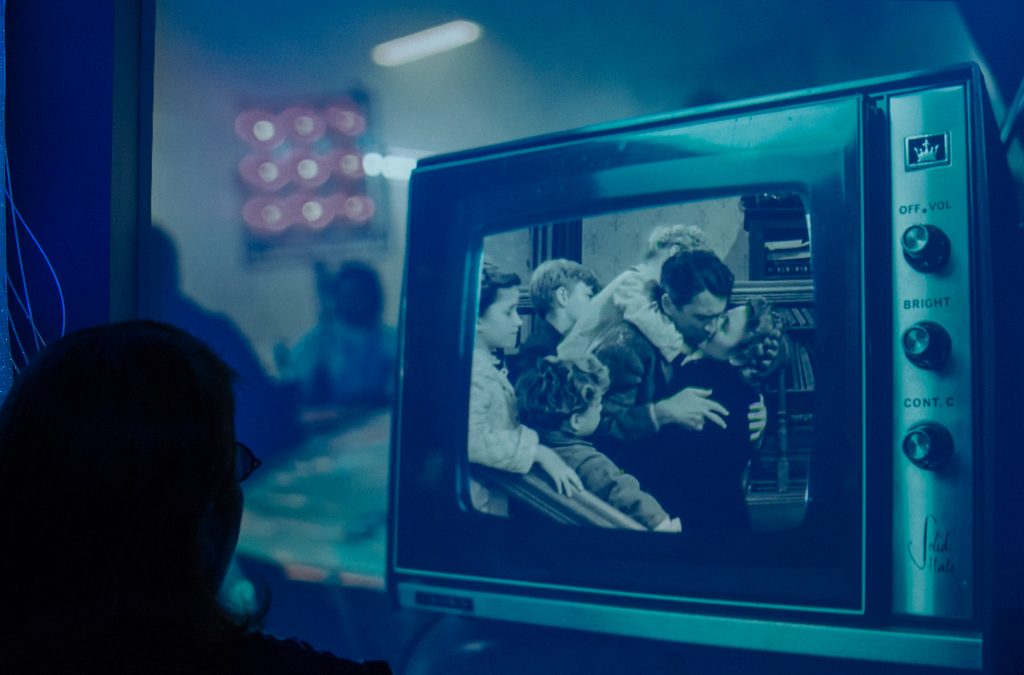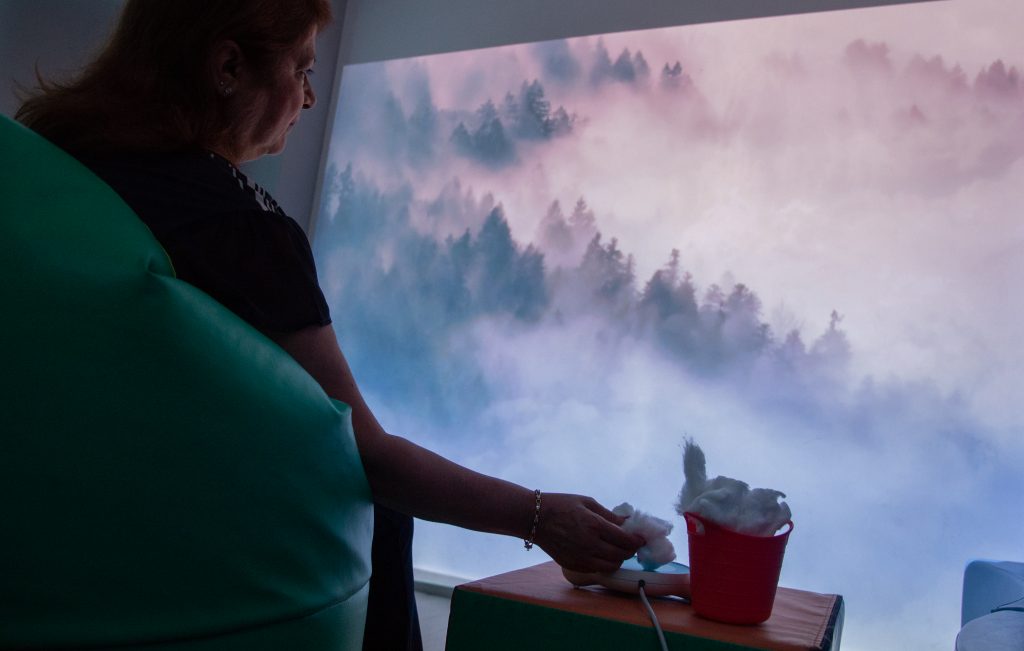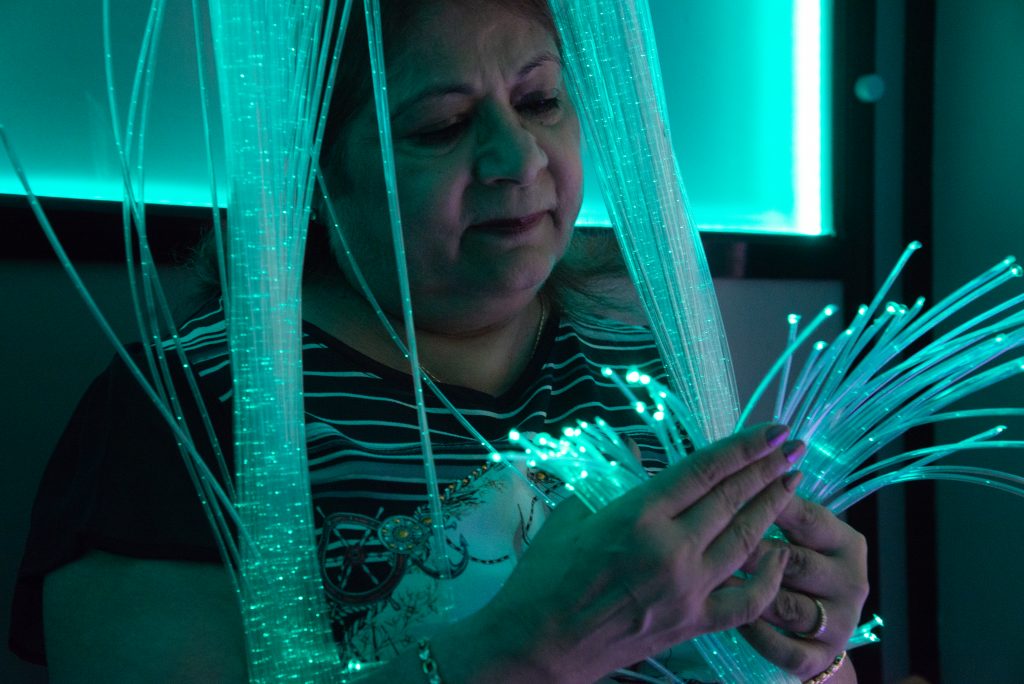Nowadays, many neurodegenerative diseases affect the elderly population to a greater extent, due to the aging of society and the increase in life expectancy. Among these diseases we can highlight dementia as the main cause of disability in the elderly, being a major concern for the population due to the impact they cause both in the welfare of the person, as well as in their family and the environment around them.
These diseases limit autonomy from the earliest stages and reduce participation in all types of activities. All of them have in common their chronicity and a progressive and irremediable evolution.
This lack of participation in activities can lead to feelings of frustration and insecurity, alterations in mood (apathy, mood swings, agitation, etc.), and even generate isolation, disconnection and behavioral alterations. Increasingly, the prescription of psychotropic drugs or “chemical restraints” is used to treat these symptoms. However, appropriate non-pharmacological management including information, education and support for caregivers, modifying the environment and avoiding triggers of dementia symptoms is always necessary and helps to control or reduce symptoms.
It has been shown that the combination of pharmacological and non-pharmacological therapies is the best way to delay deterioration and improve the quality of life of these people. Stimulation through activities appropriate to each person and involving different cognitive, sensorimotor and social processes, helps people to be more active and participative, facilitating the slowing of their deterioration, their self-determination, the improvement of their quality of life and a positive state of mind.
One of the most suitable non-pharmacological interventions for this purpose is the use of multisensory environments as a therapeutic tool. Multisensory rooms are environments of regulated stimuli that improve the emotional and behavioral state of people, supporting medication and reducing the use of physical and chemical restraint measures.
Multisensory environments include rooms that work with SHX technology. These spaces are immersive, interactive and fully customizable. They offer coherent contents according to the user who is going to perform the therapeutic intervention and combine images, sounds, video, music, lights, vibration of the furniture, and other effects that appear in the room. They allow the creation of content that enters through different sensory pathways, adapted to each person, their history, the stage they are in, their needs and interests, and include multiple intervention objectives.
How can stimulation in a multisensory environment help?
Back to basics
We all move in very complex environments where stimuli are very diverse, changing and stressful. Older people can feel uncomfortable, overwhelmed or overwhelmed in these environments, even more so in the case of people with dementia or age-related cognitive impairment. Multisensory rooms help seniors get back to the essence and find a space of calm as they easily allow the environment to be regulated to reach the person from the most essential, simple and primary of activities.
Inside the SHX multisensory rooms, we can establish certain stimuli to relive activities in a regulated manner with basic, pleasant and coherent stimuli, adapting to the sensory capabilities of each person and serving as a gateway for cognitive stimulation at different levels of complexity.

With SHX System you can create your own customized environments
In this way, we can explore the life history of each user, obtain information from the internet or other sources and find content from the era, past activities, family photos, music and songs, old radio and TV programs, etc.
The experience of these contents in the SHX multisensory room is much more intense thanks to the accessible environment that is created with the combination of other resources such as large format projection, the possibility of offering vibration throughout the body according to the acoustic signal (sensation highly connected with the emotional system), the lighting coordinated with the image causing an immersive effect, etc. In addition, it adds the possibility of being completed with other sensory elements at selected times (activate cold / heat, air, soap bubbles, projections, etc.).
This facilitates the connection with their memories, providing them with the pleasure of reliving gratifying moments in an intense way and, based on these experiences, we can focus on other cognitive aspects or perform specific exercises, in addition to episodic and retrograde memory. For example, we can perform categorization activities by images, sounds, or all together; stimulate executive skills with a sequence of colors on the bubble tube and try to remember the next color; recognize and associate images and sounds; remember scenes and identify them; etc.
Cognitive stimulation
Whether using primary stimuli or immersive scenes, they allow the therapist to generate activities of different levels of complexity to carry out cognitive stimulation adapted to the capabilities and limitations of each person and stage.
In these multisensory rooms it is possible to recreate a wide range of sensory combinations, prioritizing those most accessible and satisfactory for their users, and directing them to multiple therapeutic objectives (attention, memory, speech and language, breathing, psychomotor skills, etc.) always from an undemanding, coherent, pleasant and understandable environment.
If the person registers and integrates stimuli more effectively, he/she perceives his/her environment as less threatening or stressful and more manageable, adjusting his/her levels of alertness and attention, which facilitates his/her predisposition to any activity.

SHX System
There are infinite possibilities of interaction with the SHX rooms to perform therapeutic activities that stimulate not only memory, but also attention, concentration, anticipation, categorization, association, discrimination, language, gnosias, praxias, and a long etcetera.
Connection, communication and well-being
The versatility of the SHX system and the power of the elements of a multisensory room make it possible to create customized environments and activities that are pleasant and relevant to each person and as simple or sophisticated as required.
These pleasant and accessible sensations facilitate the connection of the person with his or her environment and facilitate communication with family members or caregivers in a positive context. Communication is created at the level at which the user is able to assimilate and can be as basic as a shared glance or a smile.
These feelings of comfort facilitate the well-being of the user, improving his predisposition to the rest of the activities and favoring an optimal environment for himself and the people around him, while facilitating his participation.
Free Project Design
If you want to learn more about the benefits of Multisensory Environments or see how you could adapt it to your space, therapeutic goals, and users, you can send an email to hello@qinera.com.













